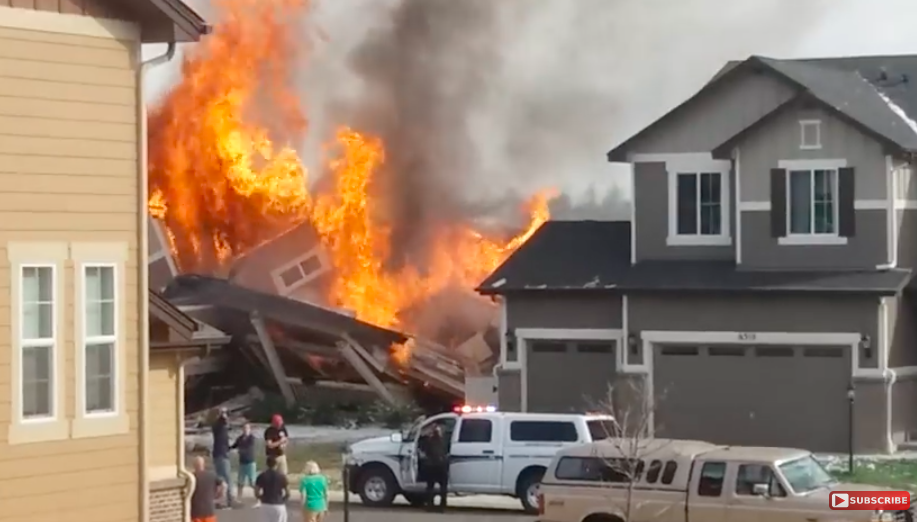
‘My Kids Are Scared’: Deadly Colorado House Explosion Sparks Debate Over Drilling Setback Rules

YouTube/Cataclysmic
Colorado residents, public safety advocates and local lawmakers have raised multiple concerns following the deadly house explosion in the town of Firestone that happened less than 200 feet away from an older vertical oil operated by Anadarko Petroleum Corporation.
“If it happened at their house, can it happen at ours?” Heather Sawlidi, 31, who lives four houses away from the house, told The Denver Post.
“My kids are scared,” she added. “I have a right to know.”
Investigators are still trying to determine the cause of the April 17 blast that claimed the lives of two men and severely injured one woman. In response, Anadarko shuttered more than 3,000 vertical wells “in an abundance of caution.”
The incident has reignited a contentious issue over the region’s booming housing and oil and gas developments pushing into the same areas.
As The Denver Post explained, thousands of people across the northern Front Range live in close proximity to thousands of older vertical wells:
“Of the 54,000 active oil and gas wells in the state, around 48,000 are older vertical wells,” the Post reports. “About 5,700 are newer, horizontally drilled wells that have been criticized for their large scale and use of hydraulic fracturing, or fracking, technology. Colorado has another 36,000 or more inactive and abandoned wells.”
Colorado Oil and Gas Conservation Commission Director Matt Lepore said that the state imposes a 500-foot setback between new oil and gas wells and existing homes. However, local governments decide how close new homes can be built to existing wells.
The newly built Firestone house was built 178 feet away from the existing oil and gas well, well within the towns’ standard of at least 150 feet.
But Shane Davis, a biologist who started the fracking resistance in Colorado several years ago and actually used to live in Firestone, said the state’s setback rules—even at 500 feet—are inadequate to protect human life.
“I have no doubt whatsoever, this tragedy could have been prevented if we had a state governing agency that was balanced and put public health, safety and welfare first,” Davis wrote Friday on his website Fractivist.org. “Oil and gas operations should never be in neighborhoods and houses should never be built around fracking well-pads.”
A tipster pointed out to EcoWatch that just a week before the fatal Firestone explosion, state lawmakers killed a setback rule bill that would have prevented oil and gas producers from drilling wells within 1,000 feet of school property lines.
The source noted that Vicki Marble, who represents Firestone in the State Senate, was one of the six Republicans who voted against the bill.
As a precaution, another petroleum company, Great Western, already announced that it shut 61 gas lines within 250 feet of homes. Great Western owns oil wells in southwest Weld County where Firestone is located.
Nearby counties are also taking action. On Thursday, Boulder County commissioners called for all oil and gas companies operating in the county to shutter their vertical wells. The next day, Adams County similarly urged operators within the county to immediately inspect vertical wells within 250 feet of occupied buildings to ensure they are safe and meet all industry operating requirements.
The Colorado Oil and Gas Conservation Commission director believes there is “no immediate threat to the environment or public safety associated with oil and gas operations in the neighborhood.”
Depending on what investigators find from the Firestone probe, Lepore said regulators will decide whether to order other energy companies to take any action.
Meanwhile, Anadarko’s stocks dropped 6.3 percent last week to a nine-month low after it announced the closure of 3,000 wells.

 233k
233k  41k
41k  Subscribe
Subscribe 